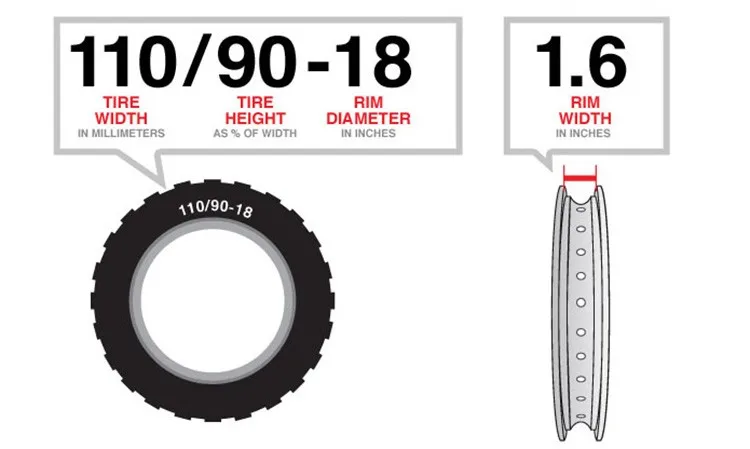Do I need to buy winter tires or can I just get snow chains?
What the heck is siping?
When do I have to have studded tires and when will studless do?
If you’re wondering how to pick the right tires for winter, or whether you need them at all, here are answers to the eight most common questions about winter tires.
(A lot of people still call tires used in the cold months “snow tires,” but it’s more accurate to call them “winter tires.” For purposes of this article, we use both terms to mean tires designed for winter driving.)
Winter tires are important for safe driving if you live somewhere that gets snow, ice, sleet or freezing rain and temperatures of 40 degrees or colder. They’re also the right option if you routinely make trips through snow zones or the mountains during the cold months.
Learn about the difference between all-season tires and snow/winter tires here.
Some all-season tires have an M+S rating. This stands for mud and snow. These tires have a more aggressive tread design to deliver better traction in a variety of conditions using larger tread blocks and wider gaps between them. The purpose of these tires is to achieve optimal tire life along with good performance in most weather conditions.
But it doesn’t mean they’re adequate for winter driving. In slick conditions, they don’t deliver the traction, control and short stopping distance that you get from a snow tire.
If you want safer driving on packed snow or ice, look for tires made with the right compound and branded with the Mountain Snowflake. This means they’ve actually been tested and certified to perform in winter conditions.
 “I have all-season tires, so I don’t need snow tires. Right?”
“I have all-season tires, so I don’t need snow tires. Right?”Wrong. Don’t believe it? See this driving comparison between all-season and snow tires.
If you’re driving on snowy or icy roads, only winter tires will give you good stopping ability and secure handling. This is because they’re built very differently. How?
Different compound. Summer and all-season tires are made with a stiffer rubber compound. This helps the tire retain its shape when it’s rolling on hot pavement. Winter tires are made with hydrophilic (that’s “water-loving”) rubber which stays softer and more pliable in winter weather. This more flexible rubber is one reason you get more traction on snow and ice.
Another reason is tread design. Winter tires have a higher “void-to-lug” ratio, meaning there are larger grooves between the blocks of tread (the lugs). The tread blocks also have irregular, sharp edges.
When a tire with wide grooves and biting edges travels over packed snow, it cuts through and scoops some of the snow into the voids on the tire surface, allowing the tread to stay in closer contact with the road.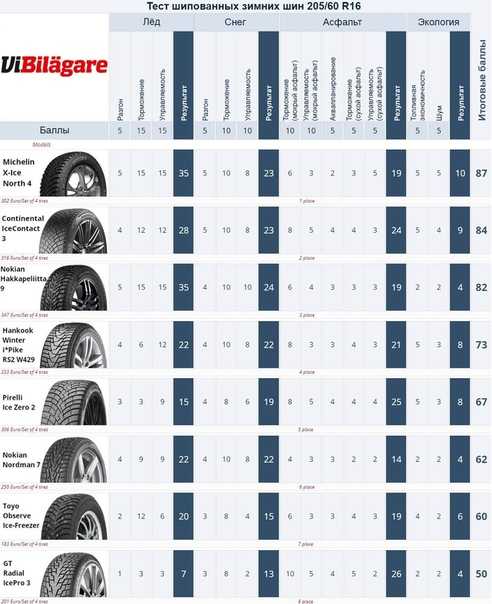 Then the velocity of the tire ejects this snow from the grooves. This is how winter tires provide more aggressive traction than all-season tires.
Then the velocity of the tire ejects this snow from the grooves. This is how winter tires provide more aggressive traction than all-season tires.
Most snow tires are already siped, with small patterned slits on the lugs that create extra edges for better road grip. Additional safety siping can be done for a fee on new or used tires. If you’re regularly traveling on slick roads, the added traction from custom siping is a good way to improve starting, stopping and rolling traction.
Before you jump on that set of “lightly used” winter tires on Craigslist, do three quick checks. First, verify they’re the right size. You can look in your vehicle owner’s manual or right on your existing tires’ sidewall close to the rim for the series of numbers. (Here’s a primer on what they all mean.) If you’re not sure the tires you’re considering are the correct size, call a tire dealer and make sure.
Second, measure the tread depth by using a tire tread depth gauge. You can pick one up at any auto parts store for under five bucks. Or have a tire store tech do it; it should be free. Take measurements in multiple places in the grooves on each tire.
A new tire typically has 11/32nds of an inch in tread depth. A rule of thumb is that if there are 6/32nds of an inch or less in tread remaining on a winter tire, it’s about to lose a good deal of snow performance. So think carefully about whether you’re going to get what you’re paying for.
Third, be sure there’s not a problem with uneven wear. Did your tread gauge measurements show any tread depth difference between the four tires? It’s really common for tires to wear differently over time. If the disparity between any two tires is more than 3/32nds of an inch, pass on those used tires. Driving with mismatched tires or putting the wrong size on your vehicle will NOT save you money in the long run. You’re risking big repair bills for your transmission.
It’s also a bad idea to put winter tires on only the front or back. This creates a big difference in traction between your axles. And this will mean less steering control, not more.
Tire chains can be important — and are sometimes required — for traction when you’re traveling in the mountains or on icy roads. But they’re not made for driving at highway speed or on bare pavement. You risk damaging your chains if you try this.
Don’t think of chains as a substitute for winter tires but as an option you need to have ready when you’re driving on snow.
Depending on the conditions and your state’s rules, traction controls in snowy areas will range from requiring only the minimum — like M+S tires on the drive axle — up to chains on all tires, including all-wheel and four-wheel drive vehicles. Here are California’s chain controls, for example.
The tire dealer will consider your driving habits, where you’re traveling and typical winter conditions in your area when recommending what you need.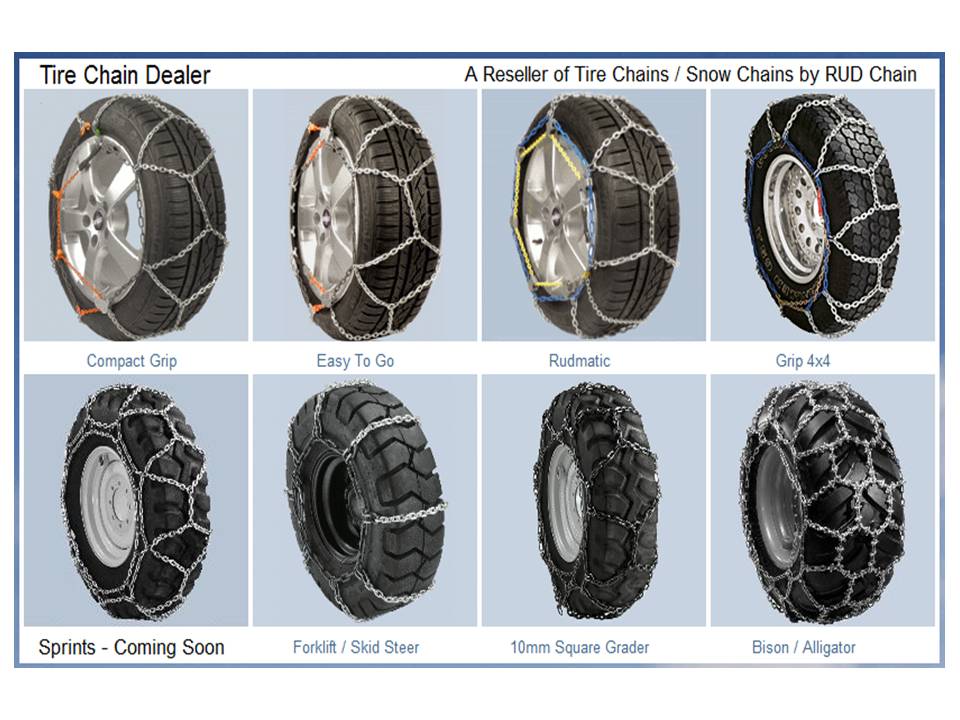
Studless snow tires work well on slush and packed snow. They get traction through wide, deep grooves and lots of irregular surfaces with sharp edges. This allows the rubber to cut through snow and grip the road.
Studded tires provide the best traction you can get, even when you're encountering ice or packed snow. Studs are lightweight, small metal spikes that are staggered across the tread. They help break through packed snow and ice-covered roads to give you better traction. Note: Extra tread depth is needed to accommodate studs, so studded tire size options are limited. Also, the times of year when studded tires are allowed on the road vary by state. Here’s a guide to studded tire regulations.
It’s a question of time and money. Here’s a way to decide:
 (Les Schwab will swap out tires purchased at our stores at no charge if they’re mounted on separate wheels.)
(Les Schwab will swap out tires purchased at our stores at no charge if they’re mounted on separate wheels.)Also consider the extra wear and tear on your tires that comes with unmounting and remounting tires on only one set of wheels. Especially with low-profile tires, it’s not uncommon for an inexperienced tire tech to damage the inside edge of a tire near the beads, the places where the tire gets pried off and pushed back on.
If you’re leaning toward separate wheels for your winter tires, here are some tips on selecting the best wheel finishes for winter conditions.
Check out tests from the Tire Industry Association in this video to see what the difference winter tires can make.
Some all-season tires are marketed as working equally well in summer and winter. That may be true in dry, mild climates where the seasons don’t vary much. But you’ll only get confident traction, braking and control on snow and ice with a winter tire. If you live in a place with winter weather, you’ll need tires marked with the Three-Peak Mountain Snowflake for safest handling. Because not all tires with a mountain snowflake have a winter compound, ask your tire dealer what you really need.
Want more tips on winter road safety? See 19 Winter Driving Resources You Can’t Do Without.
SHOP WINTER TIRES
A different wheel/tire combination is sometimes better, but there's not much leeway when changing the diameter
Author of the article:
Brian Turner
Publishing date:
Oct 11, 2018 • May 19, 2021 • 2 minute read
Join the conversation There's only so much leeway you have in changing tire sizes before it's too much. Photo by Jack Boland /Toronto Sun
Photo by Jack Boland /Toronto Sun If you’ve recently picked up a new (or new-to-you) ride, you could be excused if you reel back with some sticker shock when shopping for winter tires — or even summer rubber, for that matter. Cars of almost every type, price point and function now seem to come equipped with larger diameter, low-profile tires. And tire prices seem to rise almost exponentially when you hit rim sizes above 16 inches and profiles below 60 per cent.
Story continues below
This advertisement has not loaded yet, but your article continues below.
Just as a reminder, tires are sized by their width in millimetres, their profile or height as a percentage of their width, and their rim size in inches — makes perfect sense, right? So, a tire with the its sidewall marked 225/65R17 means the tread is 225 millimetres wide, the sidewall height is 65 per cent of the tread width, and it will fit a 17-inch wheel.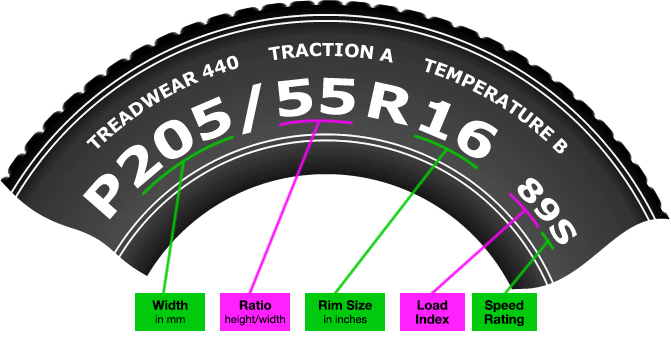
We apologize, but this video has failed to load.
Try refreshing your browser, or
tap here to see other videos from our team.
When you hit the 19-inch size and move upwards, things can get really expensive. So, to avoid a credit card meltdown, many consumers shop around for smaller-diameter tires to be installed on wheels just for winter. If things are sized correctly, moving to a smaller and narrower tire can actually improve winter traction and driving safety, as particularly wide tires — such as 275 millimetres and up — can easily ride up on snow instead of cutting through it. But how low can you go? And will your ride be able to live with your choice?
Story continues below
This advertisement has not loaded yet, but your article continues below.
There are a lot of things to consider when looking at downsizing your wheels and tires for winter. The first question you should consider is, will smaller wheels clear the brakes on your vehicle? Dealership parts departments and tire retailers can usually answer this question.
The first question you should consider is, will smaller wheels clear the brakes on your vehicle? Dealership parts departments and tire retailers can usually answer this question.
Next, will different tire sizes have clearance for turning and not rub on inner fender liners? The three-per-cent solution answers this concern — this refers to the limit in the change of the tire’s circumference, either up or down, that most recommend. But circumferences aren’t printed on the sidewall of tires, nor does this spec appear in any publicly accessible tire catalogues.
To find out what the circumference is on any particular tire, you could grab a length of string and measure it. But there is an easier way — there are many tire size calculators online, simply allowing you to do a side-by-side comparison by entering your original size and what you may be considering as a winter tire. If the two circumferences are more than three per cent apart, check out another size.
If the two circumferences are more than three per cent apart, check out another size.
More than one computer or sensor on just about anything on four wheels today requires an accurate and constant idea of how far and fast a vehicle is travelling. Most get this from wheel speed sensors, meaning if you put the wrong sized tires on a vehicle, the speed/distance data will be inaccurate.
This can lead to check engine lights, transmission shifting troubles, anti-lock brake malfunctions, along with a possible long list of problems. On certain vehicles, it can even cause a stall of the engine, which will not restart.
Story continues below
This advertisement has not loaded yet, but your article continues below.
We apologize, but this video has failed to load.
Try refreshing your browser, or
tap here to see other videos from our team.
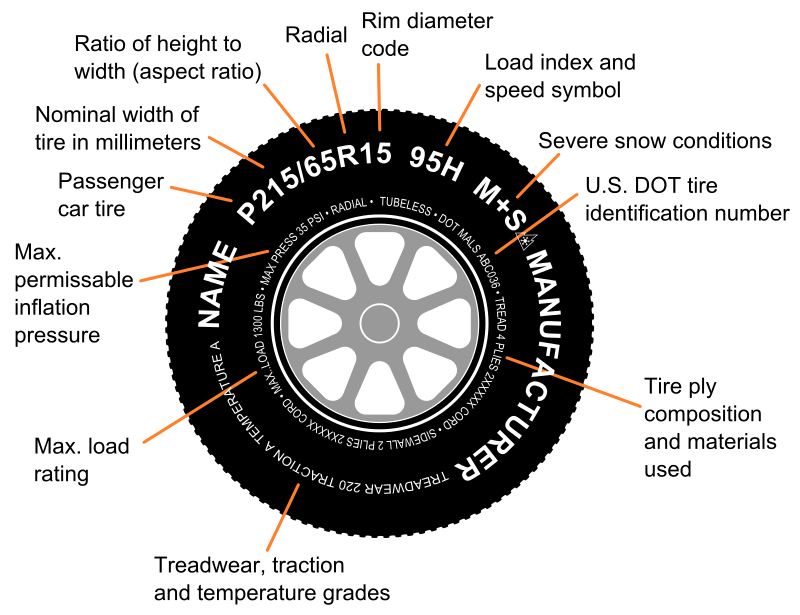 ca's Blind-Spot Monitor
ca's Blind-Spot MonitorSign up to receive Driving.ca's Blind-Spot Monitor newsletter on Wednesdays and Saturdays
Email Address
By clicking on the sign up button you consent to receive the above newsletter from Postmedia Network Inc. You may unsubscribe any time by clicking on the unsubscribe link at the bottom of our emails. Postmedia Network Inc. | 365 Bloor Street East, Toronto, Ontario, M4W 3L4 | 416-383-2300
If you pay attention to the size of rally car winter tires, you can see a narrow tread profile, richly equipped with studs. Along with this, the rubber has a rather large radius. If professionals use this tire design, then they are doing the right thing? Partly yes. A rally car must have good cross-country ability. Easy to handle on snowy circuits and Scandinavian forest tracks. But, are such wheel characteristics necessary in urban conditions?
Which size of winter tires remains the most optimal will directly depend on the operating conditions. Indeed, for a long time, narrow tires were preferred, since all winter tires were studded. It is worth noting that this type of tires continues to be popular with car owners.
Indeed, for a long time, narrow tires were preferred, since all winter tires were studded. It is worth noting that this type of tires continues to be popular with car owners.
Along with this, Western European winter tires appeared, called friction (Velcro). They do not have a studded tread. Due to the softness of the material, aggressive and deep tread pattern, numerous sipes, tires provide good directional stability to the car. But before choosing tires, you need to know the following:
The wider the tread, the larger the contact patch with the road. This improves the braking performance of the machine and improves its stability at high speed. This factor is considered an advantage for open asphalt, which means it is suitable for Velcro.
With a snowy road, the situation is inversely proportional. The sipes and tread grooves get clogged with snow and the car begins to slide. In such a situation, spikes are needed. Steel needles cut into icy or packed snow, providing traction. At the same time, the narrower the wheel, the more effectively the spikes bite into the coating, and the height of the tire increases the maneuverability and cross-country ability of the car.
The sipes and tread grooves get clogged with snow and the car begins to slide. In such a situation, spikes are needed. Steel needles cut into icy or packed snow, providing traction. At the same time, the narrower the wheel, the more effectively the spikes bite into the coating, and the height of the tire increases the maneuverability and cross-country ability of the car.
The well-known magazine "Behind the wheel" conducted a snow test. Tires tested were Nokian Hakkapeliitta 5, dimension: 195/65R15 and 205/55R16. The 195th wheels on the 65th profile had the best resistance to sliding on snow (slashnapping). Thus, confirming the "grandfather's" commandment - the narrower the winter tire, the better.
Even the car manufacturer may indicate in the owner's manual a different tire size for the summer and winter seasons. Tip: To increase the maneuverability of the car on winter roads, it is possible to use tires with a smaller diameter. For example, instead of 17-inch drives, put 15-inch ones. And along with this, take care of rubber with a higher profile than was on the 17th tires. It turns out such a scheme, the smaller the diameter of the discs, the higher the profile of the tire.
For example, instead of 17-inch drives, put 15-inch ones. And along with this, take care of rubber with a higher profile than was on the 17th tires. It turns out such a scheme, the smaller the diameter of the discs, the higher the profile of the tire.
Thus, it is possible to install high profile tires on wheels with a smaller diameter. This will provide the effect of narrow and high rubber, without damaging the suspension and drive shafts. For example, instead of 215 / 45R17, put R15 wheels with 195/70 R15 tires for the winter.
Summarizing the material of the article, we can say that the width and height of the purchased winter tires should be selected taking into account operating conditions. For warm and snowy winters, you can purchase medium-wide friction tires. For ice and snow, narrow studded tires are suitable. 95/55R16. It is in this range that one can argue.
Our winters are long and the roads are slippery in winter. Even 16 years ago, on the VAZ-2111, one of our best test pilots, Sergey Voskresensky, was looking for an answer to the question from the title, comparing the behavior of tires of dimensions 185/65R14 and 175/6514, which the plant allowed for operation.
Even 16 years ago, on the VAZ-2111, one of our best test pilots, Sergey Voskresensky, was looking for an answer to the question from the title, comparing the behavior of tires of dimensions 185/65R14 and 175/6514, which the plant allowed for operation.
His first impression was as follows:
— When evaluating handling, the narrow tire 175/65 R14 captivates from the first minutes of acquaintance with a clear, stable behavior of the car on a snowy road. In this shoe, the "eleventh" is very tolerant of ruts and other flaws in winter coverage, almost does not tire the driver with yaw even at high (120-130 km / h) speed. It is impossible not to note the good ability of the tire to swallow small bumps, which are so abundant on the winter road. It seems that practice from the first minutes of acquaintance confirms the original theory about the superiority of a narrow tire in winter conditions. Yes, and our extreme exercises on the winding track of the training ground seem to echo it - at least from the standpoint of handling.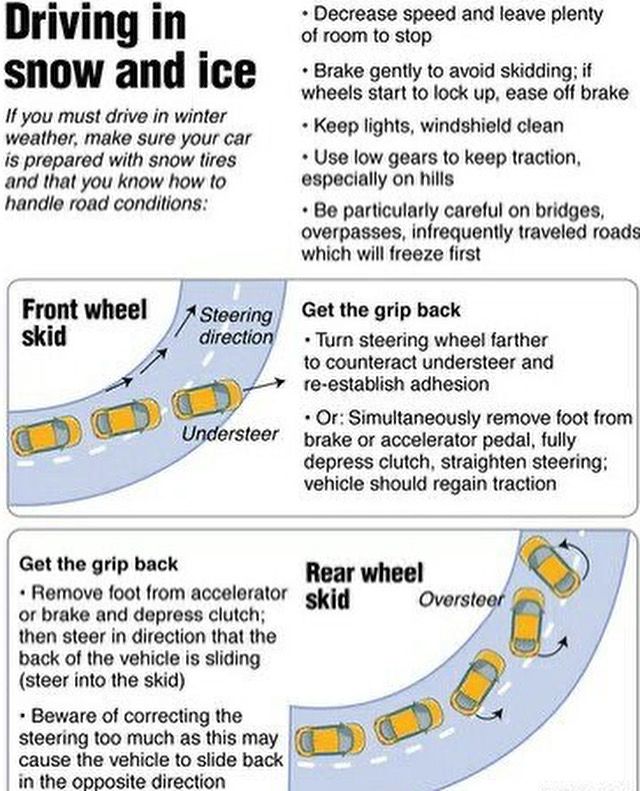 After all, the best travel time and well-predictable slide control.
After all, the best travel time and well-predictable slide control.
But, having “changed shoes” for the car, Sergey felt the car subtly:
Related materials
Big test of winter tires: choice "Behind the wheel"!
- However, traditional traction measurements make it difficult to jump to conclusions, although at first the more powerful (185 / 65R14) tire does not make the right impression. It is not only stiffer and more vibration-loaded on small bumps. This tire reacts more actively to the friability of the coating, “floating up” on the snow where the narrow one drove without problems. Hence the nervousness in the behavior of the car and the constant struggle with yaw even in a small rut. At the same time, it is noticeable on a normal road: as soon as the car hits smooth and even areas, the wide tread clings better, and it doesn’t matter what is rolled snow or ice under the wheels. And it turns out that with all the insidiousness of tires in loose snow, the VAZ-2111 drives through sections of bends, rolled to a mirror shine, much more stably.
Opinions about the wide tire are gradually changing. Almost imperceptibly, it gains better results in acceleration and braking. It is felt that she likes perfectly “ironed” areas for measurements. The situation is similar on ice. No matter how the driver tries to use all the advantages of a narrow tire, a wide one is at least a little, but better! In addition, this tire is preferable on asphalt. It's no secret - many winter tires in such conditions sin with cottony, smeared responses. And increasing the width helps to deal with such shortcomings. So not everything is as simple and unambiguous as expected.
Related materials
New fines: for out-of-season tires - that's right!

Three years ago, a test tire group compared the performance of Nokian Hakkapeliitta R2 non-studded winter tires in two dimensions, 205/55 R16 and 225/45 R17, on a Golf. Their conclusions:
Related materials
Wheels R16 or R17: what will result in savings per inch
 The difference in handling is also minimal, but again in favor of the "sixteenth". On R16 tires, the steering wheel is a little more informative, you have to turn it at smaller angles, so the Golf is easier and more clearly controlled in slips.
The difference in handling is also minimal, but again in favor of the "sixteenth". On R16 tires, the steering wheel is a little more informative, you have to turn it at smaller angles, so the Golf is easier and more clearly controlled in slips. The main advantages of wider summer tires:
Related content
We brake on wide tires - the result will surprise you
The biggest disadvantages of wide wheels are an increased tendency to aquaplaning and "nervous" behavior on an asphalt track (the car has to be kept from shying in different directions) and increased wear in the shoulder area of the tread due to the fact that the outer and inner sides pass in a turn a different path (the outer one runs a long distance).